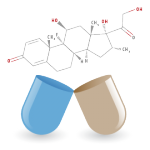 I’ve written a few times about the use of machine learning to get better at understanding the potential for a drug to have toxic side effects when consumed by a patient. One such piece of work was a recent study published in Cell Chemical Biology. The study reveals a big data based approach to detecting toxic side effects that would prohibit a drug from being used on humans before it gets to the expensive clinical trial stage.
I’ve written a few times about the use of machine learning to get better at understanding the potential for a drug to have toxic side effects when consumed by a patient. One such piece of work was a recent study published in Cell Chemical Biology. The study reveals a big data based approach to detecting toxic side effects that would prohibit a drug from being used on humans before it gets to the expensive clinical trial stage.
The latest piece of work in the field comes via a paper published by a team led by researchers at Cardiff University. The paper describes an approach whereby large databases of drugs are analyzed to assess the risk of a drug undergoing racemisation, which is when a drug becomes a mirror of itself, therefore either becoming dangerous or inert. The team believe that it’s the first time a risk assessment tool has been developed for this process.
Reducing risk
The team hope that their work can help to reduce the financial risk associated with developing new drugs by spotting potentially risky drug candidates at a much earlier stage.
Drug compounds usually exist in either a right or left-handed form. Both of these forms have an identical chemical compound, but the structure is a mirror image of each other, much in the way that left and right hands do.
Whilst drugs often contain both the right and left hand versions of a compound, only one of these is capable of providing the desired physiologic effects. The other version is much less active, and sometimes produces negative effects.
Probably the most famous example of such a phenomenon is thalidomide. The drug, which began sale in 1957, was found to cause serious birth defects because whilst one ‘hand’ of the drug produced a sedative, the other caused birth defects.
Spotting side effects
The team set up several experiments that simulated the kind of chemical conditions found in the human body, before then introducing various drugs into that system. The team monitored the rate at which each drug underwent racemisation. The results from this first phase then allowed a model to be developed to predict the racemisation rate in any drug compound, which in turn would provide an understanding of whether the drug was safe and productive.
“Following the thalidomide disaster, researchers worldwide have focussed on making compounds enantioselectively – that is containing just one enantiomer,” they say. “However, while compounds are routinely tested to ensure they are inherently stable under physiological conditions, not much thought has been given as to how to prevent configurational instability at the design stage, using suitable predictive models.”
The team believe that the risk-assessment process they’ve created will make it easier for the pharmaceutical industry to rapidly spot drugs that will fail due to their toxic side-effects, and therefore focus their time and energy on the compounds that are likely to get to market safely.